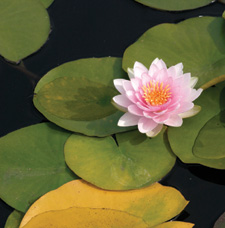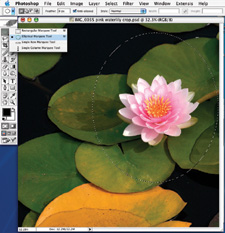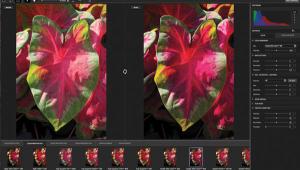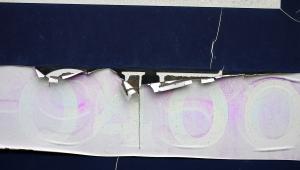Home-Grown Special Effects; Edges And Borders
Sometimes all it takes to lift your photo from the ordinary to the extraordinary is a striking edge or border. Would a soft-edged vignette or a unique pattern border take your image to the next level of dramatic impact? While there are myriad software programs and plug-ins designed to add special effect edges, borders and frames, you probably already have quite an array of possibilities built into your current image-editing software. To get you started, here are some effects that I created with Adobe Photoshop CS. You can use Elements 3.0 for these, as well. Earlier versions of these as well as other image-editing programs offer many of the same effects. Now let's give some photos a new leading edge...

Vignette
One of the most widely used effects also happens to be one of the easiest to
create--the vignette. This is where your subject is in the center of the
frame and the edges softly melt into white. While you can use it with almost
any subject, it is most often seen with portraits. Choose an image where the
subject you want to vignette is centered, or at least surrounded by a background
that can be partially deleted. Open the photo you want to vignette, duplicate
it, Image>Duplicate. Close the original and work on the copy. Here I selected
a water lily blossom and some lily pads, #1. Vignetting the flower will isolate
it graphically and create a distinctive look.
 |
|
|
Go to the toolbar and select the Elliptical Marquee tool--it's nested below the Rectangular Marquee tool, #2. Click and drag with this tool to draw a large selection around the area that you want to be the subject of your vignette. If you draw it slightly off-center, don't worry. Once the ellipse is drawn, you can move the cursor inside it and drag to reposition it. If you don't get it the first few times, simply Edit>Undo and try again.
 |
|
|
Now we want to delete the background, not the subject we've just selected.
Choose Select>Inverse to change the selection to the background. Next, for
the soft edge effect, we need to feather the selection. Choose Select>Feather
to bring up the Feather Selection dialog box. Set the Feather radius to about
25 pixels for a 12MB size image, less for a smaller image. Experiment with different
settings to get the look you like. The higher the radius, the softer the edges
will be.
Once you've feathered the selection, simply hit the delete key on your
keyboard and the selected parts of the image will be deleted, allowing the white
background to show through, #3.
 |
|
|
Since the flower in this photo was off-center, I had to use the Crop tool to crop out the excess white background. Finally, using the Image>Canvas Size command, I added a little extra white to the right side of the picture in order to center the vignette, #4. You won't have to do this last step if you select a photo where the subject is more centered.
 |
|
|
Pattern Border
Another nifty trick to create an unusual border or frame is to select a texture,
object or pattern from within the photo and use that to create a border with.
Here, I began with a photo of a 19th century floral print copied from a book,
#5.
 |
|
|
- Log in or register to post comments

















































